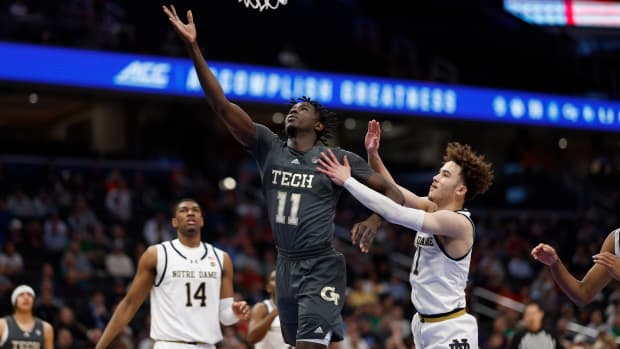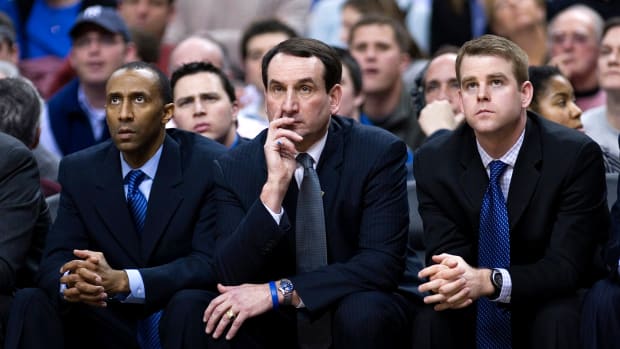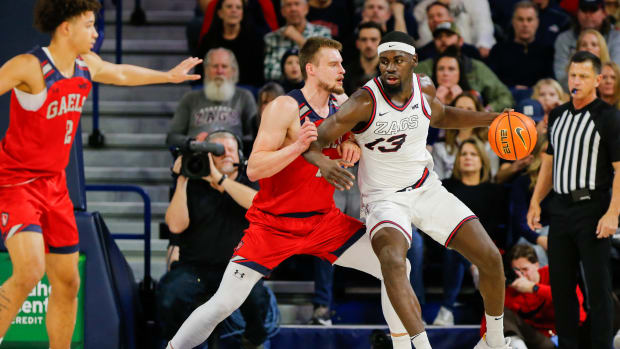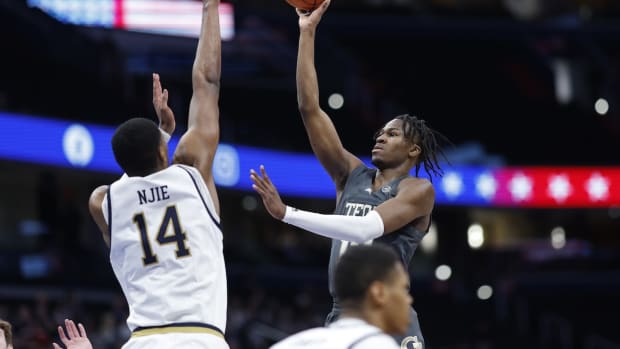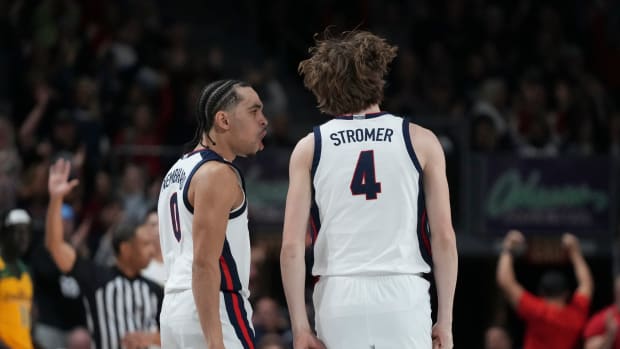The origins of the Final Four teams' mascots
The origins of the Final Four teams' mascots
Four teams. Four animal mascots. And four completely different stories of how they came together. We break down each of the mascot's origins, where history allows.
Florida Gators
The cute couple of Albert and Alberta — those are the names of the costumed mascots — have a bit of a troubled past. There are two completely different versions for how Florida got its nickname. And both are used in official Florida correspondence, although everyone agrees it happened in 1911 and surrounded the success of the football team’s trip to South Carolina. Let’s present both stories and let you pick the one you think is most plausible:
Story 1: Neal S. Storter, starting center and captain of the 1911 football team led a — somewhat mythical, mind you — student organization called the Bo Gator Club, thus he was Chief Bo Gator. It was in 1911 that the first football team was called the alligators, which was often shortened to gators, and that same year a headline in the Macon Telegraph said “Macon to be invaded by a bunch of alligators from Florida.” Could it be that a combination of forces led by the best football player on campus set into motion the adoption of the Gator nickname?
Story 2: This story claims a local shop owner, Phillip Miller, wanted to sell pennants and banners in his shop, which was popular with Florida students. But with no mascot or nickname to go with, the blue and orange that was created when schools merged to create the University of Florida, Miller needed a little help. He recruited his son in 1908, who was a student at Virginia, and his son associated alligators with Florida, so the pair opted to put an alligator on the pennant (some debunkers point out that pennants in 1908 didn’t depict mascots, only school names). Eventually the gator moniker stuck and the school adopted it in 1911 after its successful South Carolina football trip.
The true story? Let’s just say football success in 1911 finalized the lore of the Gators, an animal long associated with Florida.
Wisconsin Badgers
No, Bucky Badger wasn’t named because the good folks of Wisconsin — also known as the Badger State — loved the animal so much, but because they adored state history. The badger mascot actually took shape as far back as 1889, the very first mascot for the school. Paying homage to the lead miners of the 1820s who, without proper shelter, had to live like badgers in tunnels burrowed into hillsides, the football team took the badger name and even brought a live badger with them to games.
Live badgers can prove tricky to contain — and somewhat feisty when loose — so the live version was eventually kept safe in the Madison Zoo, and Bucky was born in 1940.
Kentucky Wildcats
Credit the Wildcats nickname and mascot to a powerful speech after a tight football game in 1909. Following Kentucky’s 6-2 win at Illinois on Oct. 9, 1909, Commandant Carbusier, head of the military department at old State University, held a chapel service. He told students that the football team had fought like wildcats. As is common with college nicknames, as students adopted the name and local newspapers started interchanging Wildcats for Kentucky in their stories, the name took off. But it wasn’t until 1976 that Kentucky fans saw the first dancing Wildcat mascot at football and basketball games.
Connecticut Huskies
The Connecticut Agricultural College Aggies had a shelf life. When the school evolved into Connecticut State College in 1933, they were no longer Aggies, by definition. So they simply went without a nickname. For about a year.
With a little envy for the University of Rhode Island’s mascot, a ram, which Connecticut students captured at one point, The Connecticut Campus student newspaper decided to set things straight, hosting a survey to select a school mascot. The husky dog won out; and while all huskies since the original have been all white, the first, named Jonathan for Governor Jonathan Trumbull, was white and black.
Tim Newcomb covers stadiums, design and gear for Sports Illustrated. Follow him on Twitter at @tdnewcomb.




